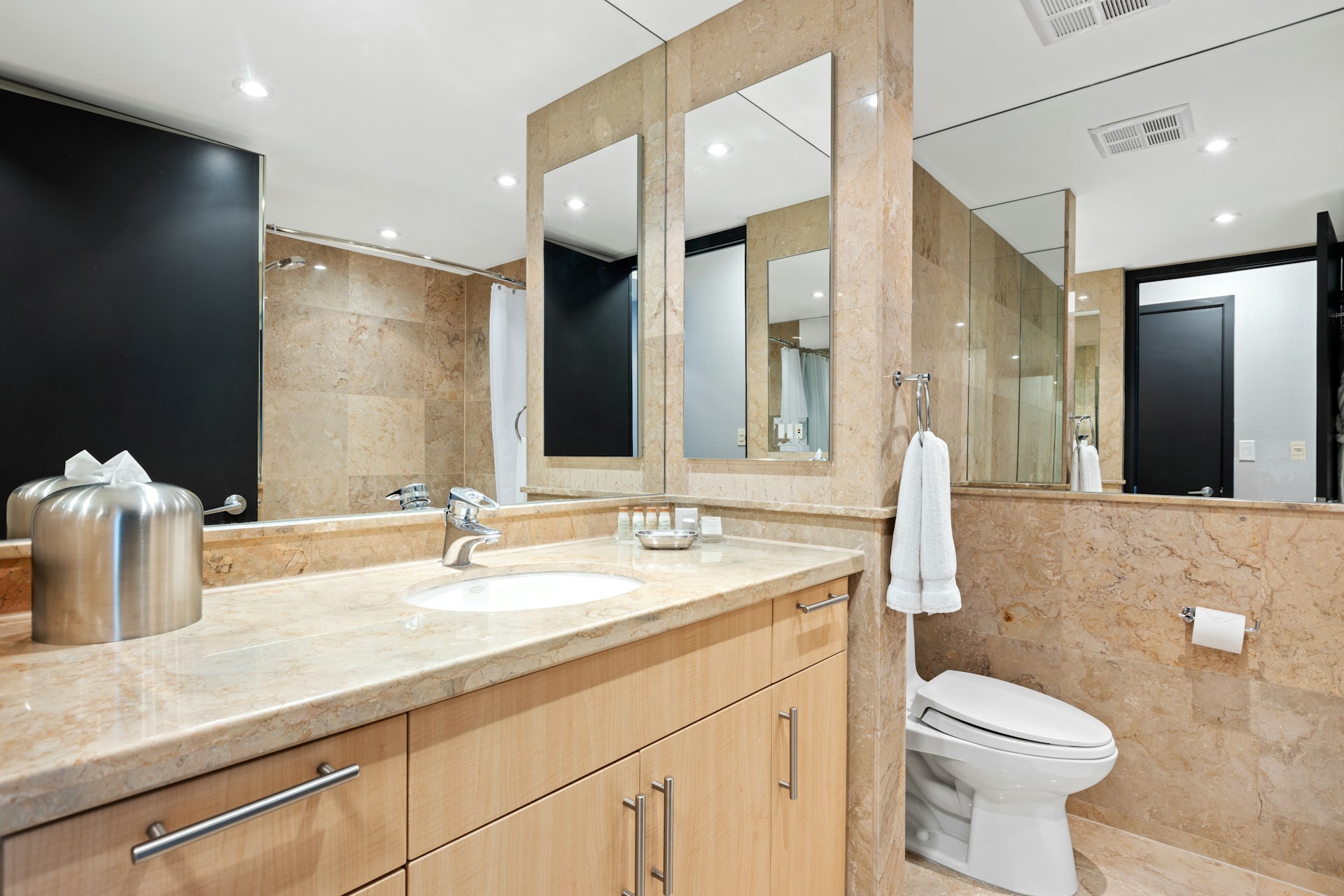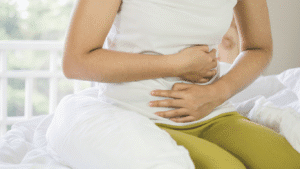Introduction
Imagine this: You’ve just finished a delicious meal and head to the bathroom to wash your hands. But as you reach for the soap dispenser, a grimy film coats your fingers, and a lingering odor fills the air. Suddenly, the desire for good hand hygiene becomes crystal clear.
Maintaining a clean and hygienic bathroom environment is more than just aesthetics; it’s crucial for your overall health and well-being. This comprehensive guide will equip you with the knowledge and strategies to transform your bathroom into a germ-free haven.
The Importance of Handwashing: A Cornerstone of Good Hygiene
Think of your hands as germ magnets. Throughout the day, they come into contact with countless surfaces, from doorknobs and keyboards to money and public transportation. These interactions transfer a plethora of bacteria and viruses onto your hands, which can easily enter your body if not properly removed.
Here’s where handwashing becomes your hero. The simple act of washing your hands with soap and water is one of the most effective ways to prevent the spread of infectious diseases. Studies have shown that proper handwashing can significantly reduce the risk of contracting various illnesses, including the common cold, influenza, and even certain diarrheal diseases.
The “When” of Handwashing:
Make handwashing a routine throughout your day. Here are some key times to prioritize this essential hygiene practice:
a. After using the toilet
This is a no-brainer! After all, the bathroom environment harbors a multitude of germs.
b. Changing diapers
Babies are particularly susceptible to infections, so ensure thorough handwashing after diaper changes.
c. Preparing and handling food
Foodborne illnesses can be a serious concern. Washing your hands before and after handling food helps prevent the spread of bacteria that can contaminate your meals.
d. Blowing your nose, coughing, or sneezing
These actions propel respiratory droplets into the air, potentially landing on your hands. Wash your hands immediately to prevent the spread of germs.
e. Being around sick people
If you’re caring for someone who is ill, frequent handwashing is crucial to avoid contracting their illness.
f. Upon arriving home, especially after being in public places
Germs are everywhere, so washing your hands upon returning home helps prevent them from spreading throughout your environment.
The “How” of Handwashing:
It’s not just about getting your hands wet. Proper handwashing requires a specific technique to ensure the removal of most germs and viruses which will ensure bathroom hygiene:
- Wet your hands with clean, running water (warm or cold).
- Apply a generous amount of liquid soap. Lather the soap well, creating a good amount of foam.
- Scrub all surfaces of your hands for at least 20 seconds. Don’t forget areas like your fingertips, between your fingers, under your nails, and the backs of your hands.
- Rinse your hands thoroughly under clean, running water.
- Dry your hands completely with a clean towel or paper towel. Damp hands are breeding grounds for bacteria, so ensure thorough drying.
Handwashing Tips and Tricks:
1. Addressing Challenges:
a. No soap and water available?
Carry an alcohol-based hand sanitizer with at least 60% alcohol content to use in a pinch. However, hand sanitizer shouldn’t replace regular handwashing when soap and water are readily available.
b. Teaching good handwashing habits to kids?
Make it fun! Use a catchy song to guide the 20-second scrubbing, or opt for brightly colored soap dispensers to capture their attention.
2. Hand Hygiene Products:
Hand sanitizers and wipes can be helpful tools for situations when soap and water aren’t accessible. However, they are not as effective as proper handwashing for removing all germs and viruses.
Maintaining a Clean Bathroom Environment
Your bathroom should be a haven of cleanliness, not a breeding ground for germs. Here’s how to create a hygienic bathroom space:
Cleaning Essentials:
a. Disinfectants:
Choose a disinfectant effective against bacteria and viruses. Opt for eco-friendly options whenever possible.
b. Cleaning cloths:
Microfiber cloths are ideal for surfaces that require disinfecting. Use separate cloths for cleaning the toilet and other bathroom surfaces to avoid cross-contamination.
c. Sponges:
Sponges can harbor bacteria, so replace them regularly. Opt for disposable options or disinfect them thoroughly after each use.
d. Toilet brushes:
Regularly disinfect your toilet brush to maintain hygiene.
Cleaning Routine:
Develop a regular cleaning schedule and aim to clean high-touch surfaces (sinks, faucets, toilets, doorknobs) daily or every other day. Include a weekly deep clean for bathtubs, showers, floors, and trash disposal.
Proper Ventilation:
Maintain good ventilation during cleaning to prevent the spread of fumes and moisture. Open a window or turn on the bathroom fan while cleaning.
Preventing Germs in the Bathroom:
1. Moisture Management:
Bathroom hygiene is naturally prone to moisture buildup, which can create a breeding ground for mold and mildew. Here’s how to combat it:
- Take shorter showers.
- Open a window or turn on the exhaust fan after showering or bathing.
- Wipe down shower walls and surfaces with a squeegee after use to remove excess water.
- Consider using a dehumidifier in your bathroom, especially if you experience persistent moisture problems.
2. Shared Bathrooms:
If you share a bathroom with others, establish hygiene etiquette:
- Clean up after yourself. Wipe down surfaces you’ve used with disinfectant wipes.
- Store personal hygiene products separately. This helps prevent the spread of germs.
- Communicate openly about cleaning expectations and responsibilities with roommates or family members.
3. Shower Hygiene:
- Shower or bathe regularly, depending on your activity level and personal needs.
- Use warm water and a gentle cleanser suitable for your skin type.
- Pay attention to areas that tend to sweat and accumulate dirt, such as your armpits, groin, and feet.
- Clean your razor or other shaving tools after each use to prevent the spread of bacteria.
4. Bathroom Storage Solutions:
- Declutter your bathroom to minimize surfaces where germs can accumulate.
- Store items off the floor and away from sources of moisture.
- Use closed containers for toiletries and cosmetics to keep them dust-free.
- Clean and disinfect toothbrush holders, soap dispensers, and other bathroom accessories regularly.
Personal Hygiene Practices
Beyond a clean bathroom hygiene environment, good personal hygiene practices are essential for optimal health and well-being:
1. Showering/Bathing Routine:
- The frequency of showering or bathing depends on individual needs and activity levels. Generally, daily showering is recommended for those with active lifestyles or living in hot climates.
- Pay particular attention to hygiene after exercise or strenuous activity when you sweat more.
2. Dental Hygiene:
- Brushing your teeth twice a day (morning and night) and flossing once a day are crucial for maintaining good oral health.
- Brushing removes food particles and plaque buildup, while flossing reaches areas between teeth that a toothbrush can’t.
- Use a fluoride toothpaste for optimal protection against cavities.
- Replace your toothbrush every three months or sooner if the bristles become frayed.
3. Feminine Hygiene:
- During menstruation, prioritize proper hygiene to prevent infections and discomfort.
- Change sanitary pads or tampons regularly, at least every 4-8 hours.
- Dispose of used hygiene products properly in designated bins.
- Wipe from front to back to prevent the spread of bacteria.
- If you experience unusual vaginal discharge, odor, or irritation, consult a healthcare professional.
4. Nail Care:
- Maintain clean and healthy nails by:
- Trimming your nails regularly using appropriate nail clippers.
- Avoiding nail-biting, a bad habit that can introduce germs into your body.
- Keeping nails at a manageable length to minimize dirt accumulation under them.
- If you choose to wear nail polish, opt for breathable formulas and remove them regularly to allow your nails to breathe.
Addressing Common Bathroom Hygiene Concerns
Bathroom Odors:
Unpleasant bathroom odors can be a common concern. Here are ways to eliminate and prevent them:
- Maintain a regular cleaning routine that includes disinfecting surfaces and emptying trash bins frequently.
- Address the source of the odor. Is it coming from the toilet, drain, or a forgotten hygiene product?
- Use baking soda and vinegar to naturally deodorize drains and garbage disposals (if present).
- Invest in an air freshener designed for bathrooms. Opt for natural options like essential oil diffusers or scented candles.
- Ensure proper ventilation by opening windows or using exhaust fans to remove moisture and prevent odor buildup.
Toilet Clogs:
Toilet clogs can be frustrating and messy. Here are some preventive measures and solutions to maintain Bathroom Hygiene:
- Avoid flushing non-biodegradable items like wipes, paper towels, feminine hygiene products, and dental floss. These materials can contribute to clogs.
- Invest in a toilet plunger and keep it readily available for emergencies.
- For minor clogs, try a natural solution: Pour a pot of hot water down the toilet to loosen the clog. You can also try a baking soda and vinegar mixture (similar to drain cleaning).
- For more stubborn clogs, a plunger may be necessary.
- If the clog persists, consider calling a plumber for professional assistance.
Shower Mold and Mildew:
Mold and mildew thrive in damp environments. Here’s how to prevent and combat them:
- Maintain proper ventilation during and after showering. Open a window or turn on the exhaust fan to remove moisture.
- Wipe down shower walls and surfaces with a squeegee after use to remove excess water.
- Use a mold and mildew remover on existing growth. Follow the product instructions carefully and ensure proper ventilation while using.
- Consider using natural cleaning solutions like vinegar and water to combat mold and mildew.
Bathroom Leaks:
Leaks can damage your bathroom and create a breeding ground for mold. Here’s what to do:
- Be vigilant about checking for leaks around faucets, pipes, and the toilet base.
- Address minor leaks promptly to prevent them from worsening.
- For significant leaks, call a qualified plumber to diagnose and repair the problem.
Conclusion
By incorporating the tips and strategies outlined in this comprehensive guide, you can transform your bathroom into a clean, hygienic haven. Remember, good bathroom hygiene practices contribute not only to your own health and well-being but also to the overall health of those who share your living space.




